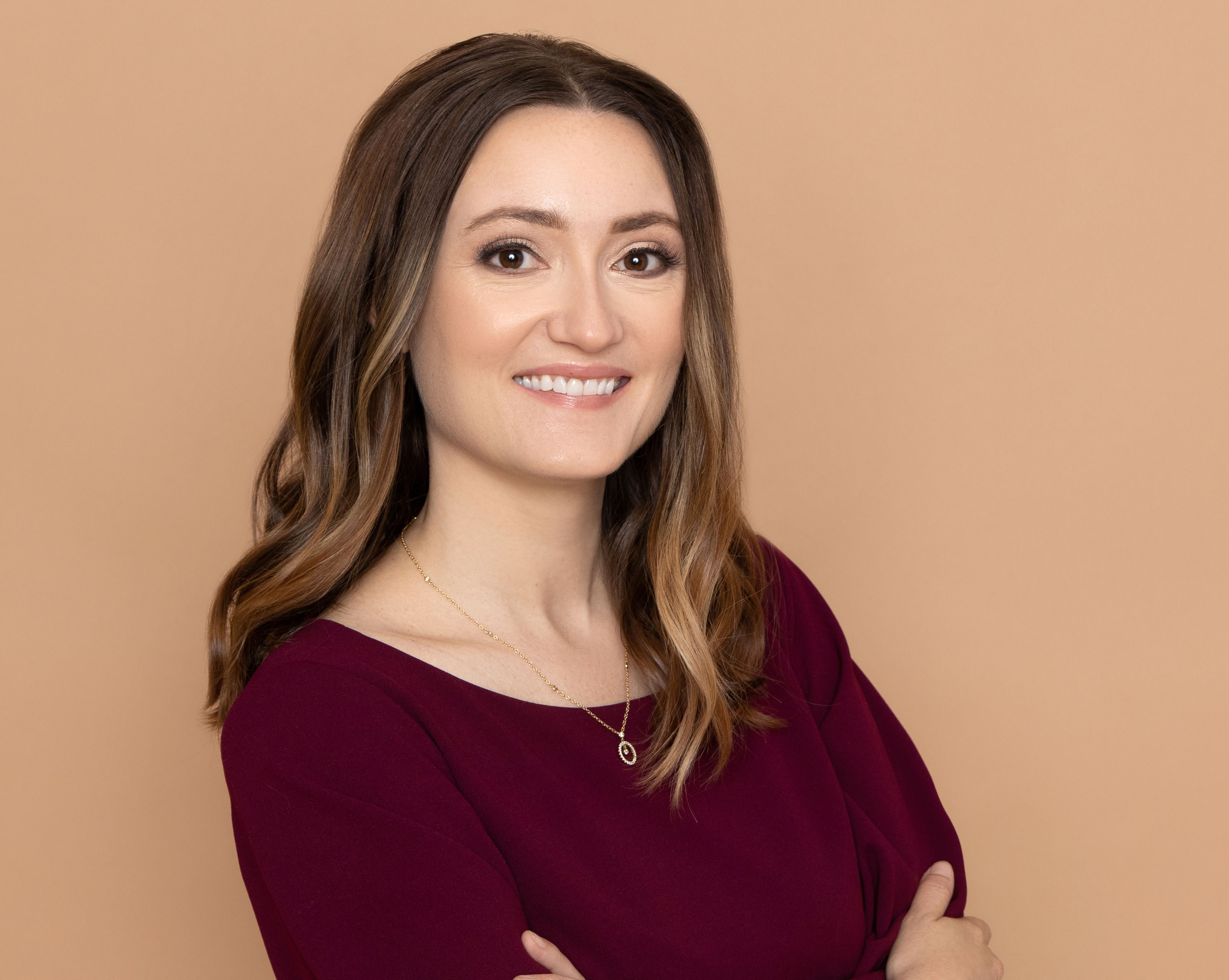GET TO KNOW TENNGREEN LAND CONSERVANCY’S EXECUTIVE DIRECTOR!
Why does TennGreen’s mission, conserving land where people and nature can thrive, matter to you?
I grew up in the suburbs of Atlanta, in a neighborhood that was once a private hunting and fishing club where people could escape from the city. I played in the woods surrounding the homes and fished in the lakes. We had turkeys and deer, and all kinds of wildlife that would visit our backyard. Nearby were parks, rivers, and streams that we’d play in or bike along—the Chattahoochee River Center and Sope Creek come to mind. I wish that all kids could have my childhood.
But Atlanta continued to grow, and the suburbs continued to expand. The nearby farms and woods have rapidly disappeared. These once-rural lands are now considered to be inner suburbs. Shopping centers, sprawling McMansions, non-high-density housing, etc., have taken over the entire county and far beyond. They’ve extended metro Atlanta’s sprawl significantly while threatening the forests and tree canopy that make the city so wonderful (I know that not everyone thinks Atlanta is wonderful, but it holds a special place in my heart).
Though I’m not from Tennessee, I have deep Tennessee roots and recognize that we’re experiencing similar, historic changes. The more I learn about land, the more I understand how impactful it is to all of our daily lives. Protecting land is the most effective, long-lasting tool to safeguard our natural resources and the spaces that heal, inspire, and help us all thrive.
What excites you the most about TennGreen right now?
The possibilities.
Thanks to the support of our members, TennGreen is fiscally-sound and well-positioned to pursue conservation opportunities as they arise. But now’s the time to expand the organization’s mission to new communities where we haven’t always had a strong presence—and we’ll need more help to do that. If you’re someone who knows of lands that need to be saved or communities that are interested in learning more about conservation, please reach out. That’s what we do, why we’re here, and we want to help. “If you know of lands that need to be saved or communities that are interested in learning more about conservation, please reach out. That’s what we do, why we’re here, and we want to help.”
More specifically, I’m extremely excited about TennGreen’s new Strategic Plan that will be adopted in the fall. The initiative is inclusive and focused, guided by leaders in the conservation field, David Allen and Nancy Moore. We have an exceptional steering committee leading the process: Dr. Mark Peacock, Melinda Welton, Jim Garges, Christy Moberly, Christie Henderson, and myself. I can’t wait to share our vision, strategies, and next steps once the Plan is complete!
What values do you bring to the organization?
I am strongly committed to organizational excellence. I hold everyone on my team to high standards, and this has been demonstrated through my work in other roles at TennGreen.
One example is in the rebranding process that TennGreen completed following guidance and feedback from our last Strategic Plan. I love our new name and visual identity. The colors are sharp, the name is simple and clear yet unique, and I love how the style communicates our values. I hope our members love it too, as they play such a big part in everything we do. A HUGE kudos to Carolyn Rehm, TennGreen’s Communications Manager, who oversaw a tremendous amount of work.
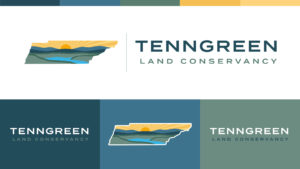
Another important value is my persistence in the fulfillment of our mission. Like TennGreen’s leaders before me, accomplishing this monumental mission requires a certain tenacity. Whether it be a decades-long conservation easement negotiation or raising funds to purchase land for public recreation, persistence is a crucial trait necessary to conserve our lands and landscapes for generations to come.
And, as far as ensuring TennGreen’s effectiveness, the key to this is making sure our team of experts is able to thrive. To me, this means establishing shared values through authentic conversations that drive our work, modeling compassionate management, providing opportunities for growth at all levels, and ensuring a priority of work-life balance. I work each day to provide an environment where crazy ideas are welcomed, where team members feel supported, and where successes are celebrated—big and small.
What do you want to see TennGreen accomplish in the next year? Five years? Twenty years?
It may be premature to say, because most of our vision will be set through TennGreen’s Strategic Planning work (which is ongoing), but I have so many ideas about how we can make an immediate and urgent impact in our communities. First and foremost: a focus on outreach—being present in communities where we need conservation accomplished quickly.
Across Tennessee, folks know that our lands and landscapes are both a point of pride, and at urgent risk. From Memphis to the Tri-Cities, the people of our state express similar values and desires: We all want Tennessee to be a great place to live, work, and play. We appreciate what our natural world has to offer and understand we must be good stewards of it. Farmers, hikers, foodies, paddlers, hunters, backyard birdwatchers, fishers, and more—we’re all a part of a shared mission.
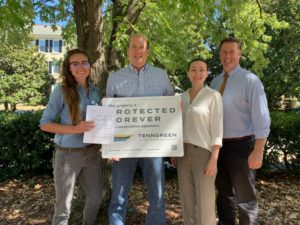
However, many Tennesseans have not yet learned about their conservation options: the power of conservation easements or the opportunities to donate or sell land for safeguarding. So, the next critical step is building awareness, trust, and relevancy in our communities. It’s our responsibility to listen, to learn, to engage, and to provide the educational tools and experiences needed so that people become aware of our work and our most pressing risks, and understand how it’s all relevant to their daily lives. Andrew Bowman, President of the Land Trust Alliance, cleverly calls this“growing our conservation canopy.”
Looking ahead twenty years from now, I hope that much of our biodiverse lands and waters are protected. More often than not, these projects take a long time . . . but we don’t have time to wait. In the more distant future, I envision a TennGreen that’s more focused on stewardship than acquisition, because we’ve protected all that we can dream of (and more!). “In the more distant future, I envision a TennGreen that’s more focused on stewardship than acquisition, because we’ve protected all that we can dream of (and more!)”
What do you need the most to support this vision?
The first step to getting where we need to be is completing TennGreen’s new Strategic Plan. It’s a wonderful process that David & Nancy lead us through. Their team collects anonymous feedback and insight from our members, partners, staff and Board, and other nonprofit leaders in the conservation space. They compile the data to establish an initial outlook on what TennGreen is doing well and not doing well—or better yet, how it’s perceived to be performing—and then host interviews with key stakeholders to dig deeper into their findings.
The information is compiled and shared with TennGreen’s Board and staff, prior to a retreat at which overarching goals are determined as it pertains to the organization’s vision statement. Each goal is assigned a champion—a Board member that takes the helm of setting each tactic and measurement for success, and these champions lead a smaller team to create the final strategies to achieve each goal.
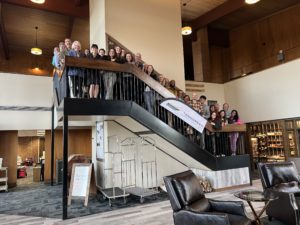
Finally, a report is produced, and the Plan is adopted. Truly, the Plan is created and embraced by the Board, with significant input from all our key stakeholders, and that’s one of the reasons why this process is so effective.
Once the Plan is in place, the work begins. Although we don’t yet know what will unfold, executing this work will require significant investments. These funds will be necessary for the strategies that will get more work done—whether that be growing TennGreen’s staff in regions throughout Tennessee, investing more in marketing and outreach, growing our endowment to ensure a sustainable future, or ideas that have not yet been had!
What is the organization’s greatest asset?
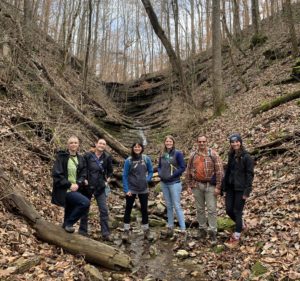 At the risk of sounding corny, our team—TennGreen’s staff and Board of Directors. Our members, friends, and partners. Without each of them (which likely means you if you’re reading this!), we simply couldn’t accomplish what must be done before these opportunities are gone forever. I’m particularly proud of our small staff. Although we have and continue to grow to meet this challenge, we’ve always maintained a very grassroots ethos.
At the risk of sounding corny, our team—TennGreen’s staff and Board of Directors. Our members, friends, and partners. Without each of them (which likely means you if you’re reading this!), we simply couldn’t accomplish what must be done before these opportunities are gone forever. I’m particularly proud of our small staff. Although we have and continue to grow to meet this challenge, we’ve always maintained a very grassroots ethos.
The second most valuable thing is our partnerships with our landowners, especially those who’ve taken action to conserve their land with a conservation easement. These folks know their land and its stories, work hard to protect its resources and natural values, and exemplify the generosity and visionary thinking for which we should all aspire. Spending one-on-one time with our landowners as we walk their land together, hearing the histories and the stories, that may be one of my favorite aspects of my new role.
What do you wish that people knew about TennGreen?
I think most people would be surprised to learn how little funding we receive in grants. Most nonprofit organizations receive significant grant funding (public and private) to execute their work. Often, our partners—the Open Space Institute is remarkable in this way—will help to fund land purchases or conservation easements, but these visionary organizations are few and far between. And even fewer grant-making bodies provide funding for our work, unless we were to pursue opportunities that would drift us from our mission. So, to get this blink-and-you-miss-it work done, we rely on our members and corporate sponsors’ generosity. And we are so grateful.
What is your fondest memory of being in nature?
Most summers, I attended a camp in Dahlonega, Georgia, that was built around the stunning Cane Creek Falls. Each day, we would have an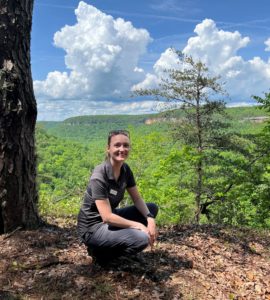 hour or so of “free time” to do whatever we wanted–visit the craft shack, sing on the porch, swim, etc. One day, I was sitting outside along Cane Creek in a somewhat isolated section with my back against a tree, reading Siddhartha by Hermann Hesse. Under the shade of the tree canopy, listening to the rustling wind and the babbles of the stream, I read of Siddhartha reaching enlightenment through the sounds of the water. It was an incredibly personal, spiritual moment and awe-inspiring in its very quiet way.
hour or so of “free time” to do whatever we wanted–visit the craft shack, sing on the porch, swim, etc. One day, I was sitting outside along Cane Creek in a somewhat isolated section with my back against a tree, reading Siddhartha by Hermann Hesse. Under the shade of the tree canopy, listening to the rustling wind and the babbles of the stream, I read of Siddhartha reaching enlightenment through the sounds of the water. It was an incredibly personal, spiritual moment and awe-inspiring in its very quiet way.
Siddhartha made an effort to listen better. The image of his father, his own image, the image of his son merged, Kamala’s image also appeared and was dispersed, and the image of Govinda, and other images, and they merged with each other, turned all into the river, headed all, being the river, for the goal, longing, desiring, suffering, and the river’s voice sounded full of yearning, full of burning woe, full of unsatisfiable desire. For the goal, the river was heading, Siddhartha saw it hurrying, the river, which consisted of him and his loved ones and of all people, he had ever seen, all of these waves and waters were hurrying, suffering, towards goals, many goals, the waterfall, the lake, the rapids, the sea, and all goals were reached, and every goal was followed by a new one, and the water turned into vapour and rose to the sky, turned into rain and poured down from the sky, turned into a source, a stream, a river, headed forward once again, flowed on once again. But the longing voice had changed. It still resounded, full of suffering, searching, but other voices joined it, voices of joy and of suffering, good and bad voices, laughing and sad ones, a hundred voices, a thousand voices.
Siddhartha listened. He was now nothing but a listener, completely concentrated on listening, completely empty, he felt, that he had now finished learning to listen. Often before, he had heard all this, these many voices in the river, today it sounded new. Already, he could no longer tell the many voices apart, not the happy ones from the weeping ones, not the ones of children from those of men, they all belonged together, the lamentation of yearning and the laughter of the knowledgeable one, the scream of rage and the moaning of the dying ones, everything was one, everything was intertwined and connected, entangled a thousand times. And everything together, all voices, all goals, all yearning, all suffering, all pleasure, all that was good and evil, all of this together was the world. All of it together was the flow of events, was the music of life. And when Siddhartha was listening attentively to this river, this song of a thousand voices, when he neither listened to the suffering nor the laughter, when he did not tie his soul to any particular voice and submerged his self into it, but when he heard them all, perceived the whole, the oneness, then the great song of the thousand voices consisted of a single word, which was Om: the perfection.
What might someone be surprised to know about you?
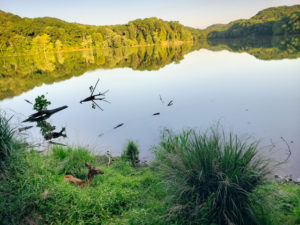
Although I was born and raised in Atlanta, I am a Tennessean from three of my four grandparents. My grandmother, Virginia Grimes, taught English and Industrial Arts at Franklin High School for 26 years. She graduated from Peabody College for Teachers in 1945; I graduated from Vanderbilt’s Peabody College with my Master’s in 2011, just 66 years later. She grew up in Sylvan Park, just a two-mile drive from my house. Her father owned Evans Cleaners on Charlotte Pike and was good friends with Wendell Smith, the namesake of one of my favorite local meat-and-threes. Her husband, Ralph, who passed away when my mom was young, had deep family roots in Williamson County. Although born in Water Valley, he was raised in Franklin. His grandfather (my great-great-grandfather) was born on property that is now Radnor Lake State Natural Area. In the early 20th century, he moved his family into Carnton and later to a farm on Clovercroft Road. My grandmother on my father’s side, Martha Way Hudson, grew up on McFerrin Avenue in East Nashville, and I remember fondly traveling to Memphis to visit my Aunt Margaret Grimes. So, although I never initially intended to settle in Nashville, it seems it was fate. And I love the life that I’ve built here.
Interest and awareness of TennGreen and its vital mission appear to be growing. Why do you think that is?
I think it’s a combination of many things.
Population growth is everywhere—the massive Blue Oval City development, Murfreesboro ranking #3 in the country for growth—even people who recently moved to Tennessee are noticing this boom. We all see more farms being lost as apartments pop up. We see more roads where there were once forests. We see our waters and streams hurt from pollution, development runoff, and factory farming, and there’s so much trash that fills our creeks and riverbeds. We’re also experiencing increasing out-of-season and devastating weather-related events. So, I think that the relevancy of our work is expanding outside of people who love nature, hiking, and wildlife. I’ll also add, I’m sure the COVID-19 quarantine played a factor in enhancing all of our appreciation for the wonderful experiences we can have in nature.
What do you consider to be your most impactful TennGreen success to date?
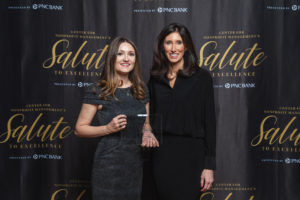 I love TennGreen’s annual Hike-a-Thon (happening in April this year!). I love that we’re able to celebrate everyone who recreates in nature throughout Tennessee and beyond. I love that we can partner with retailers; I love seeing teams compete against each other to support our work and get healthy. We all know that time spent in nature has incredible benefits to our health, mental and physical, and I just love, love, love that we’re able to combine all of these things into a unique, fun, and successful fundraiser. And then that we were recognized for this event at the largest nonprofit award ceremony in the country—and that we won?! Amazing.
I love TennGreen’s annual Hike-a-Thon (happening in April this year!). I love that we’re able to celebrate everyone who recreates in nature throughout Tennessee and beyond. I love that we can partner with retailers; I love seeing teams compete against each other to support our work and get healthy. We all know that time spent in nature has incredible benefits to our health, mental and physical, and I just love, love, love that we’re able to combine all of these things into a unique, fun, and successful fundraiser. And then that we were recognized for this event at the largest nonprofit award ceremony in the country—and that we won?! Amazing.
Meet the rest of the TennGreen team here.

